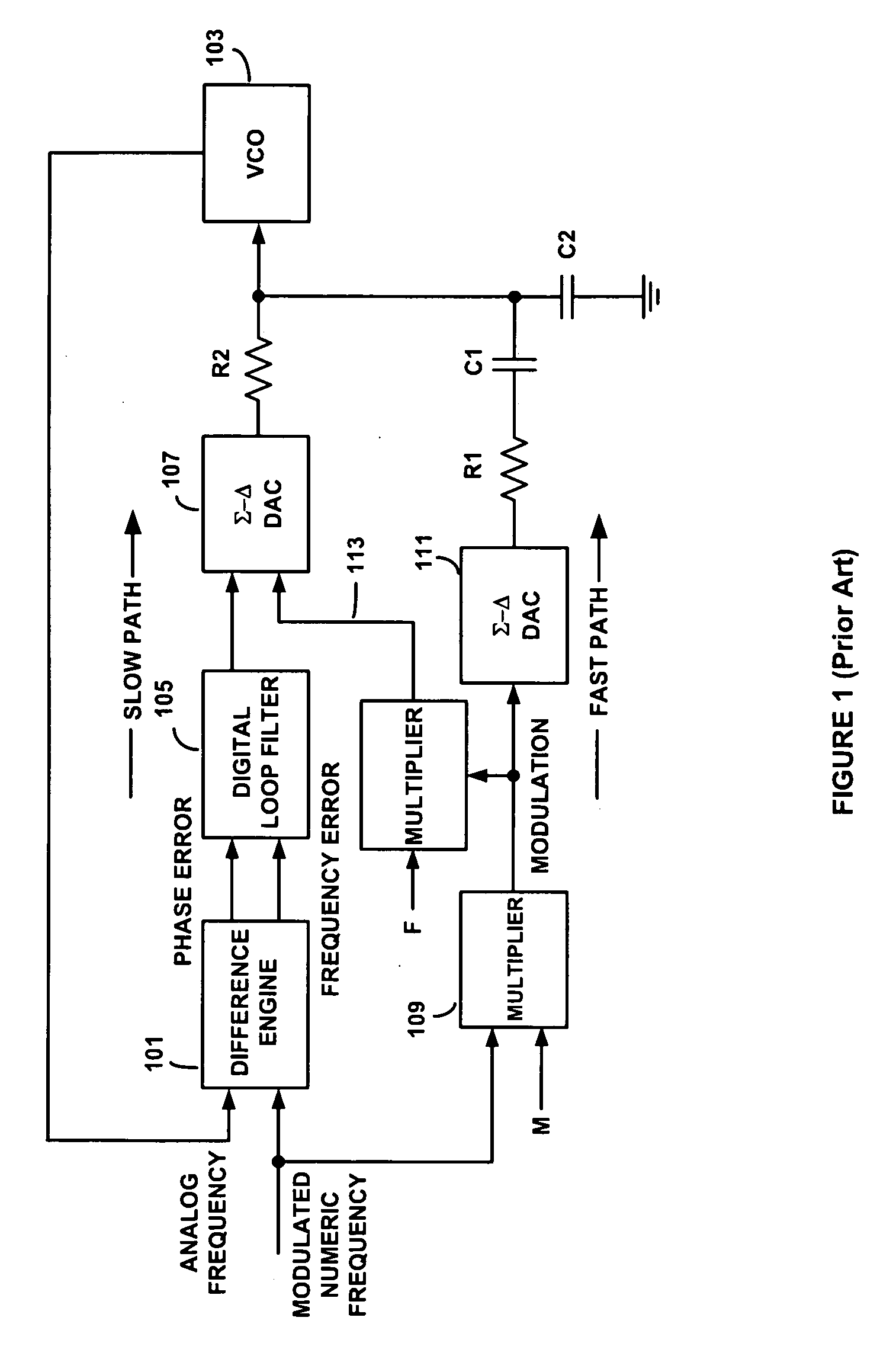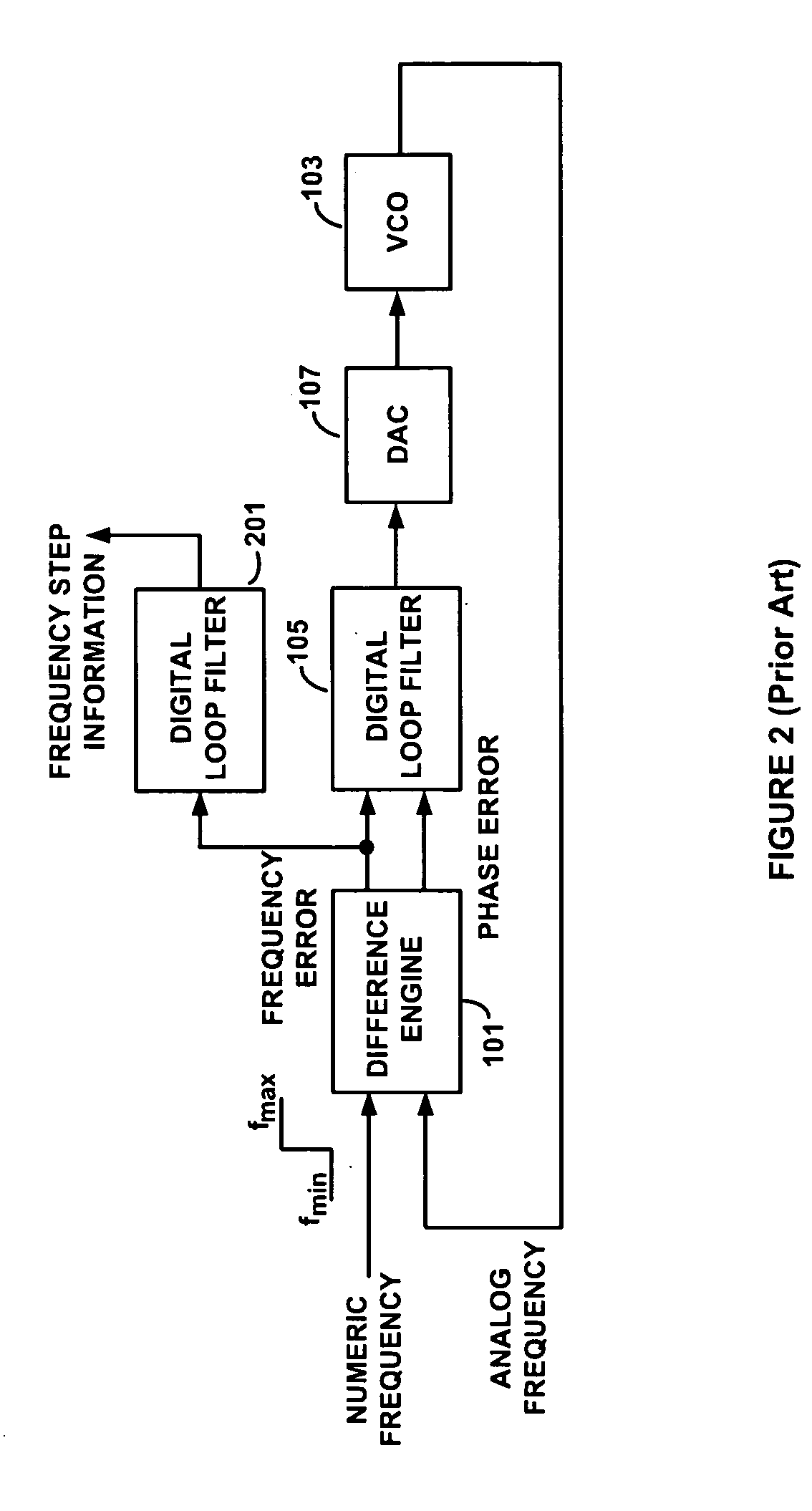Bandwidth control in a mostly-digital pll/fll
a technology of mostly digital and frequency-locked loops, applied in the direction of automatic control, electrical equipment, etc., can solve the problems of circuit arrangements not enjoying the benefits of ddfs, circuit arrangement disturbance, and output signal transitions that are not purious, so as to reduce disturbances, improve frequency switching time, and improve the effect of frequency switching speed
- Summary
- Abstract
- Description
- Claims
- Application Information
AI Technical Summary
Benefits of technology
Problems solved by technology
Method used
Image
Examples
Embodiment Construction
[0028]Those of ordinary skill in the art will realize that the following detailed description of the present invention is illustrative only and is not intended to be in any way limiting. Other embodiments of the present invention will readily suggest themselves to such skilled persons having the benefit of this disclosure. Reference will now be made in detail to implementations of the present invention as illustrated in the accompanying drawings. The same reference indicators will be used throughout the drawings and the following detailed description to refer to the same or like parts.
[0029]Referring now to FIG. 3, there is shown a block diagram of a PLL / FLL in accordance with one aspect of the present invention. A frequency constant is applied to an adder 321 together with a modulation phase difference signal. A resulting sum is applied to a digital frequency synthesizer (DFS) 301a. The DFS 301a outputs a stream of bits representing a desired frequency of a VCO 303, an output signa...
PUM
 Login to View More
Login to View More Abstract
Description
Claims
Application Information
 Login to View More
Login to View More - R&D
- Intellectual Property
- Life Sciences
- Materials
- Tech Scout
- Unparalleled Data Quality
- Higher Quality Content
- 60% Fewer Hallucinations
Browse by: Latest US Patents, China's latest patents, Technical Efficacy Thesaurus, Application Domain, Technology Topic, Popular Technical Reports.
© 2025 PatSnap. All rights reserved.Legal|Privacy policy|Modern Slavery Act Transparency Statement|Sitemap|About US| Contact US: help@patsnap.com



